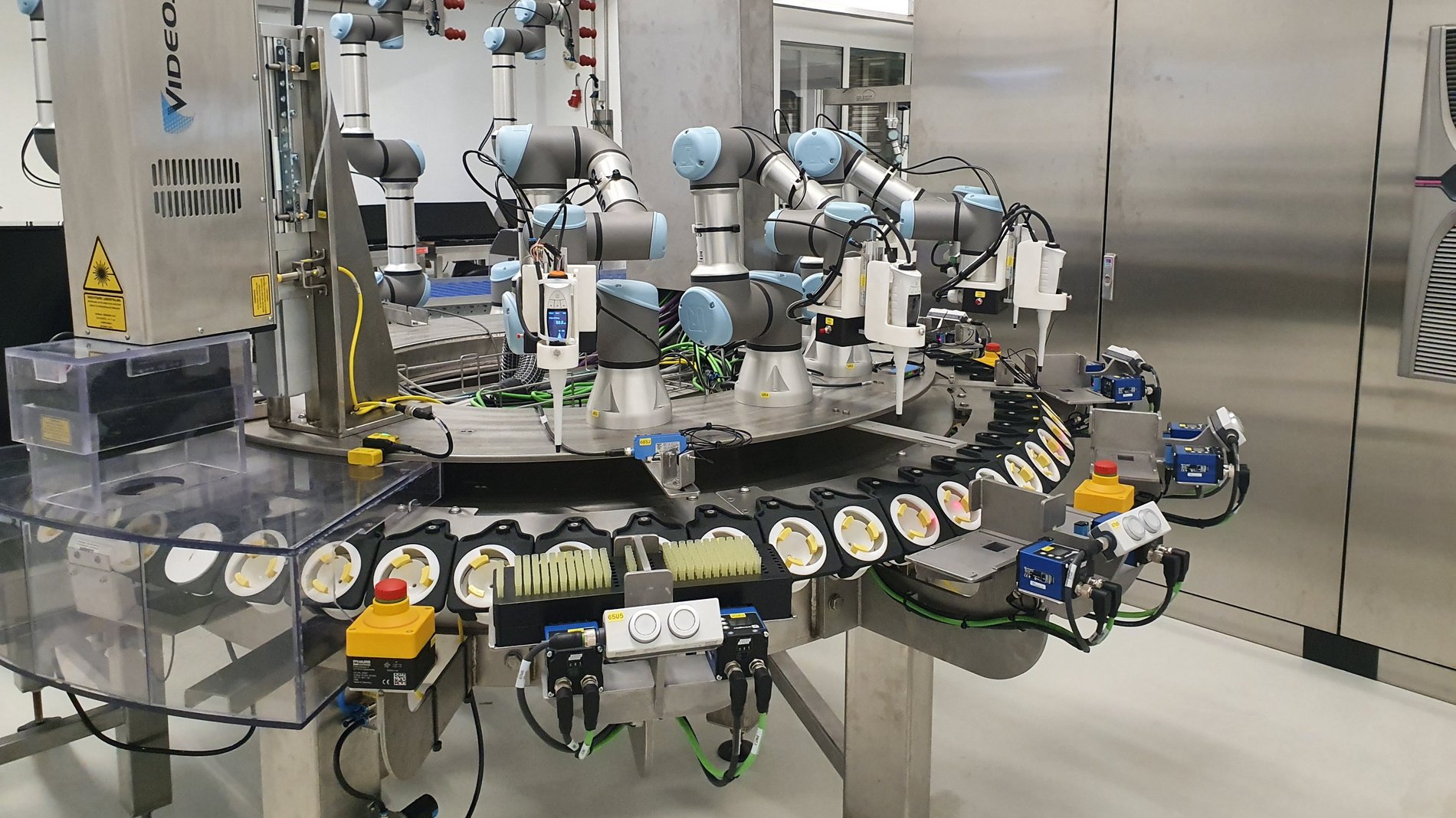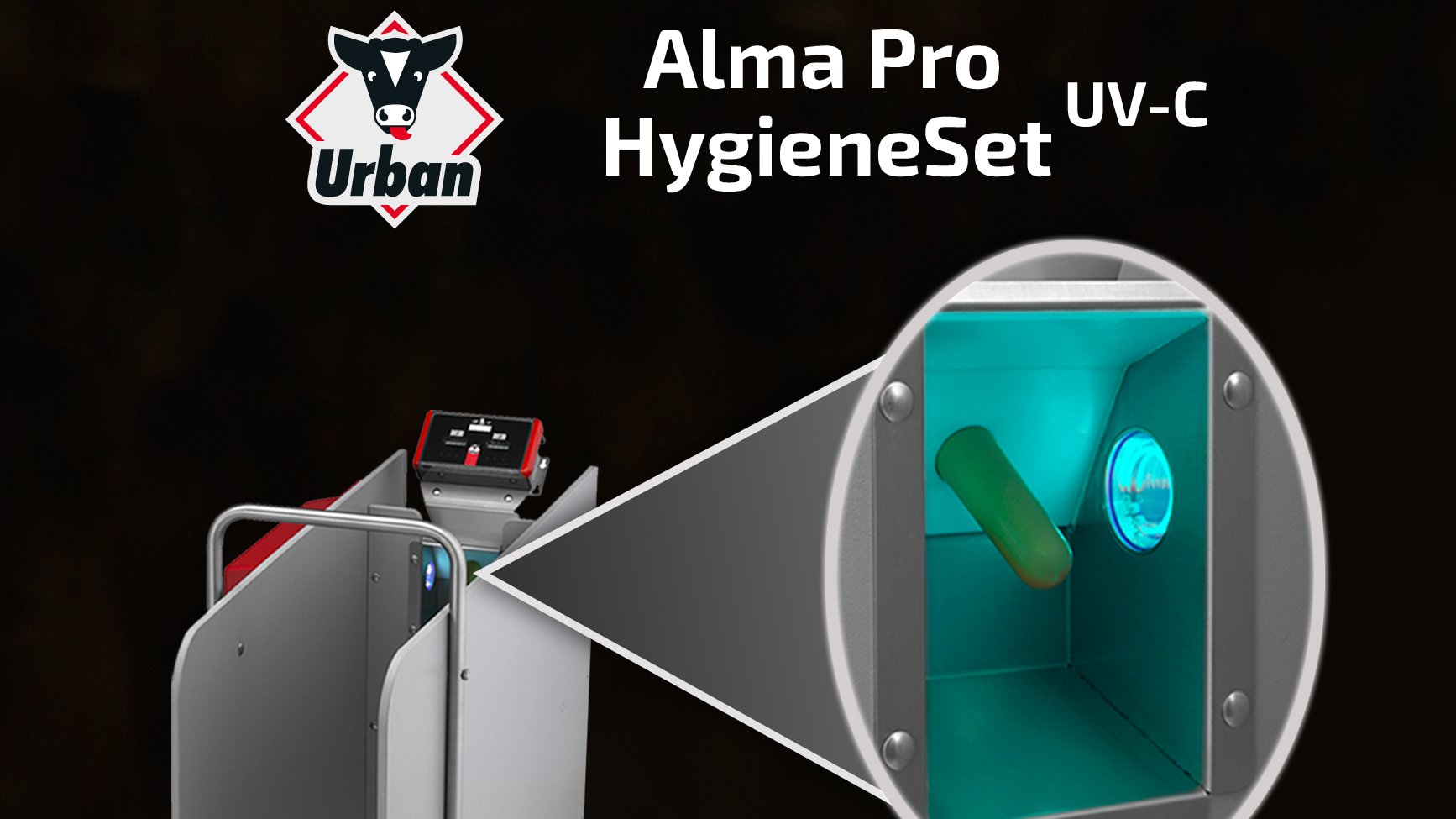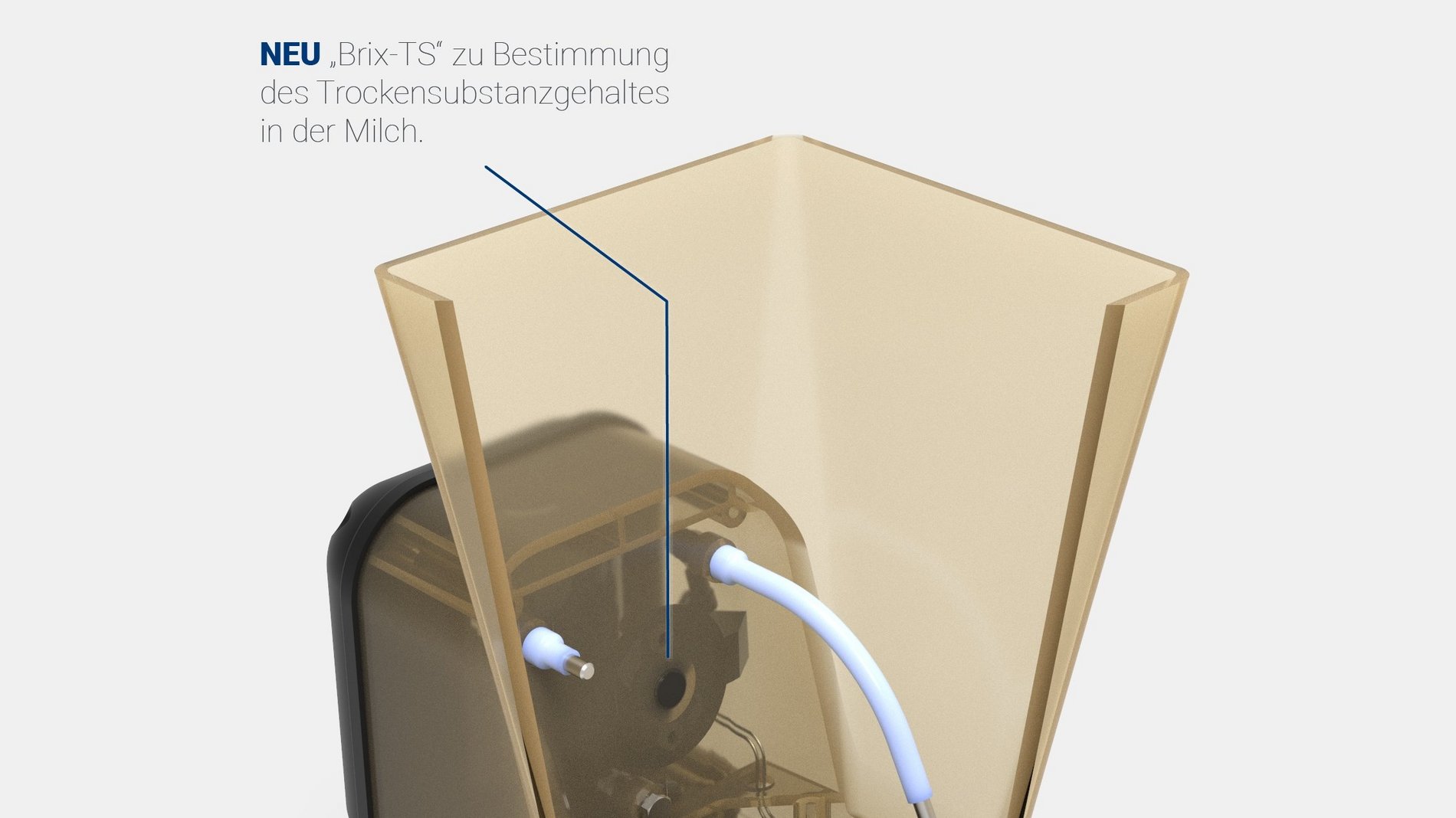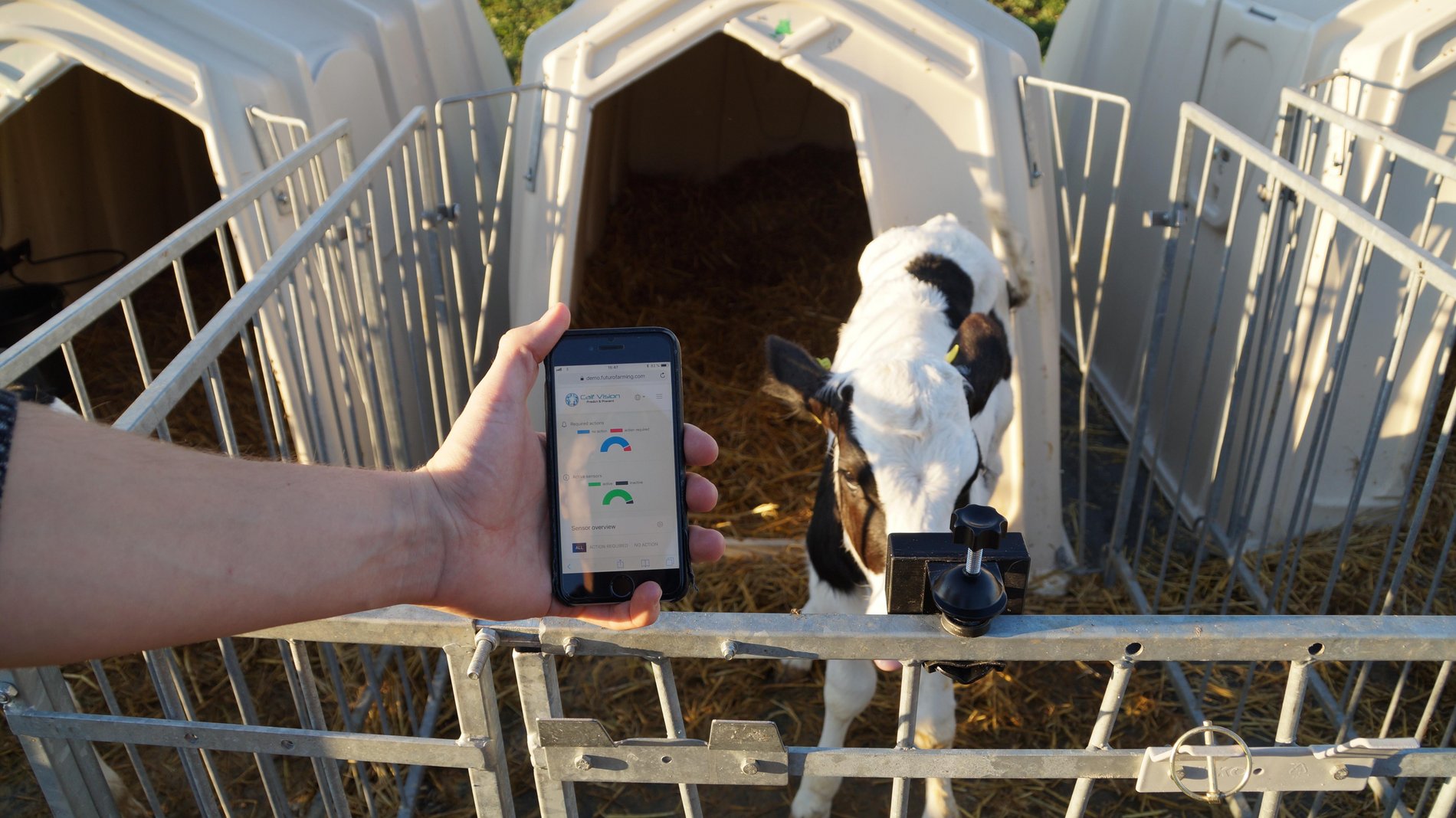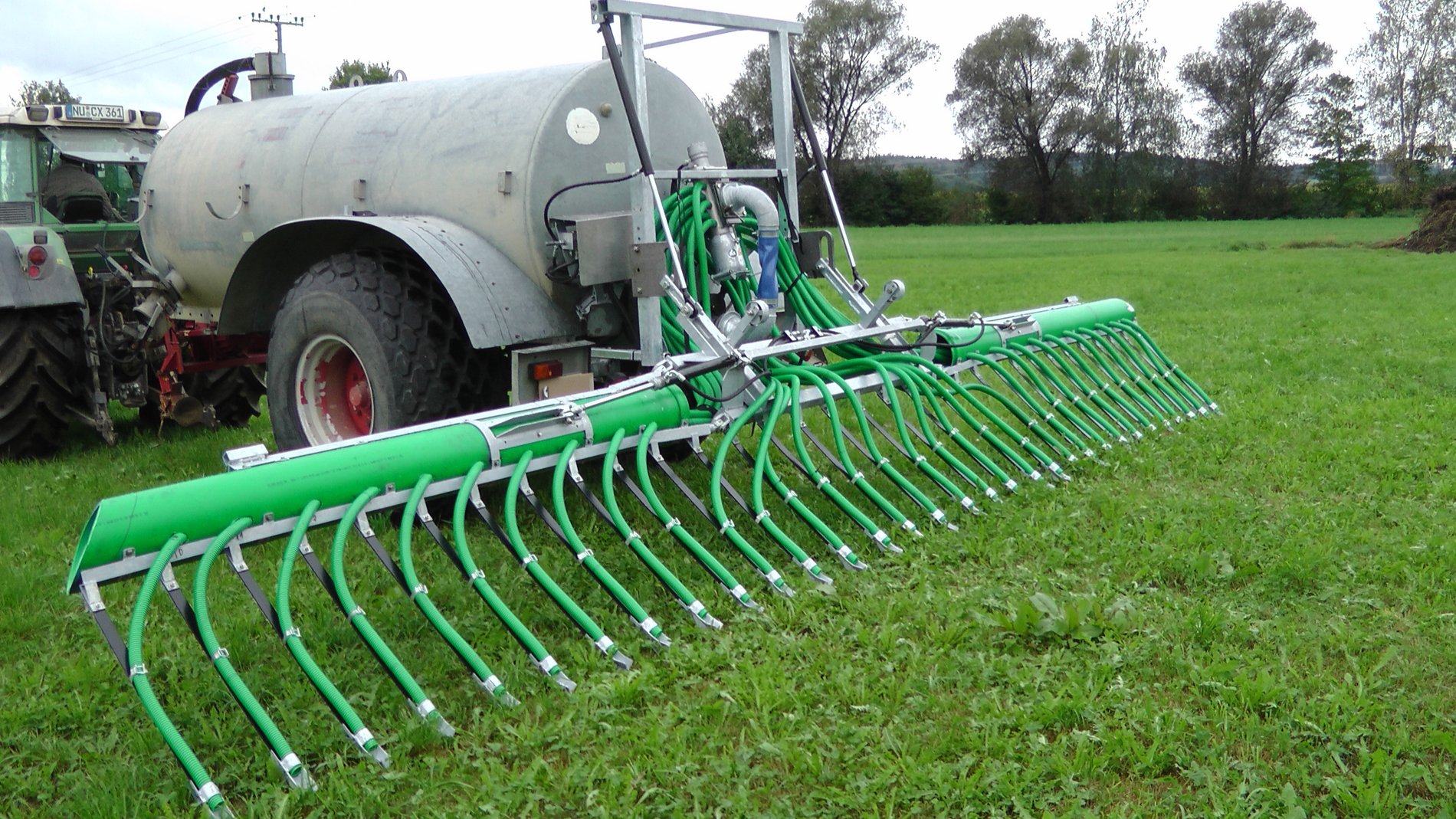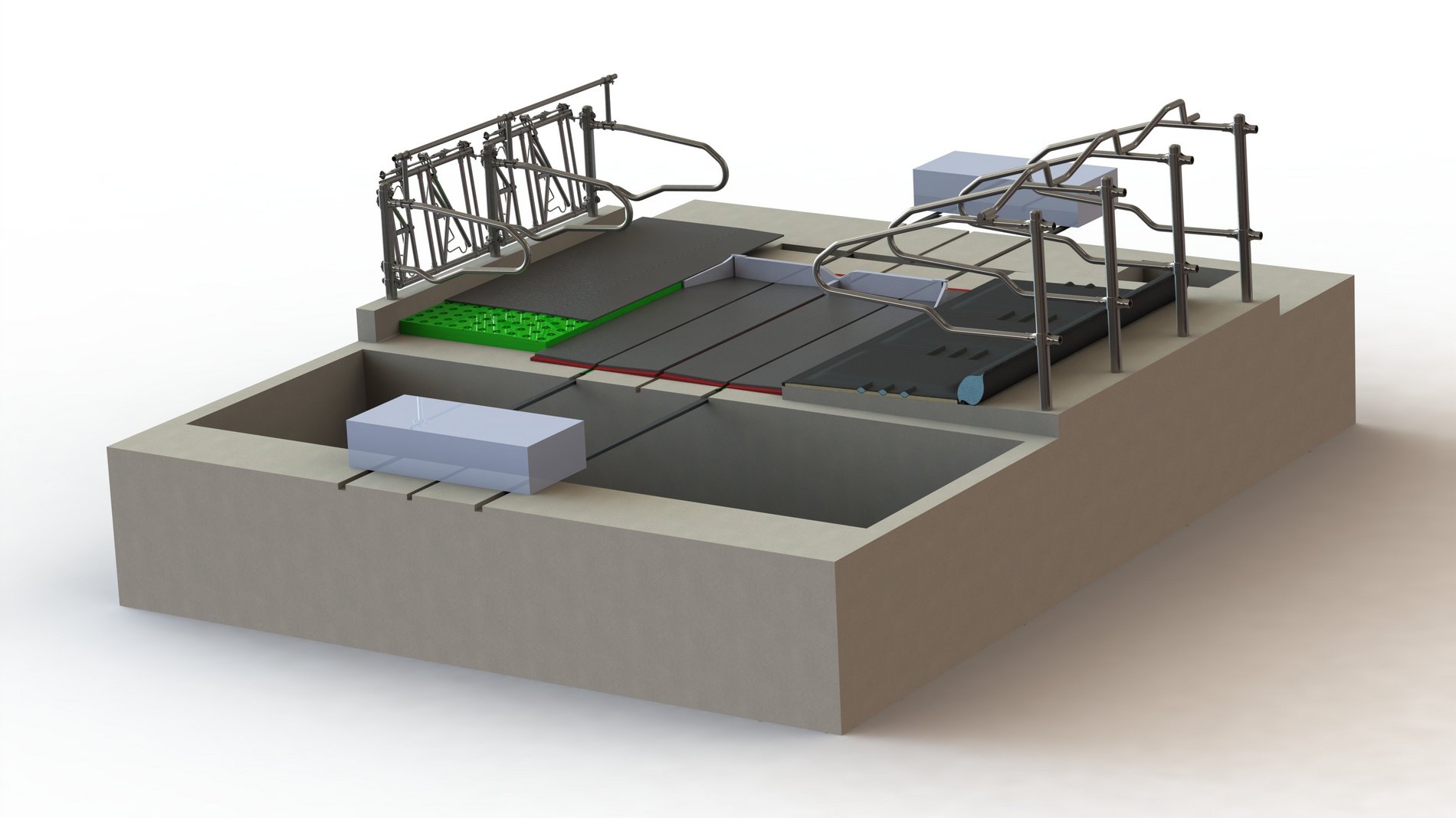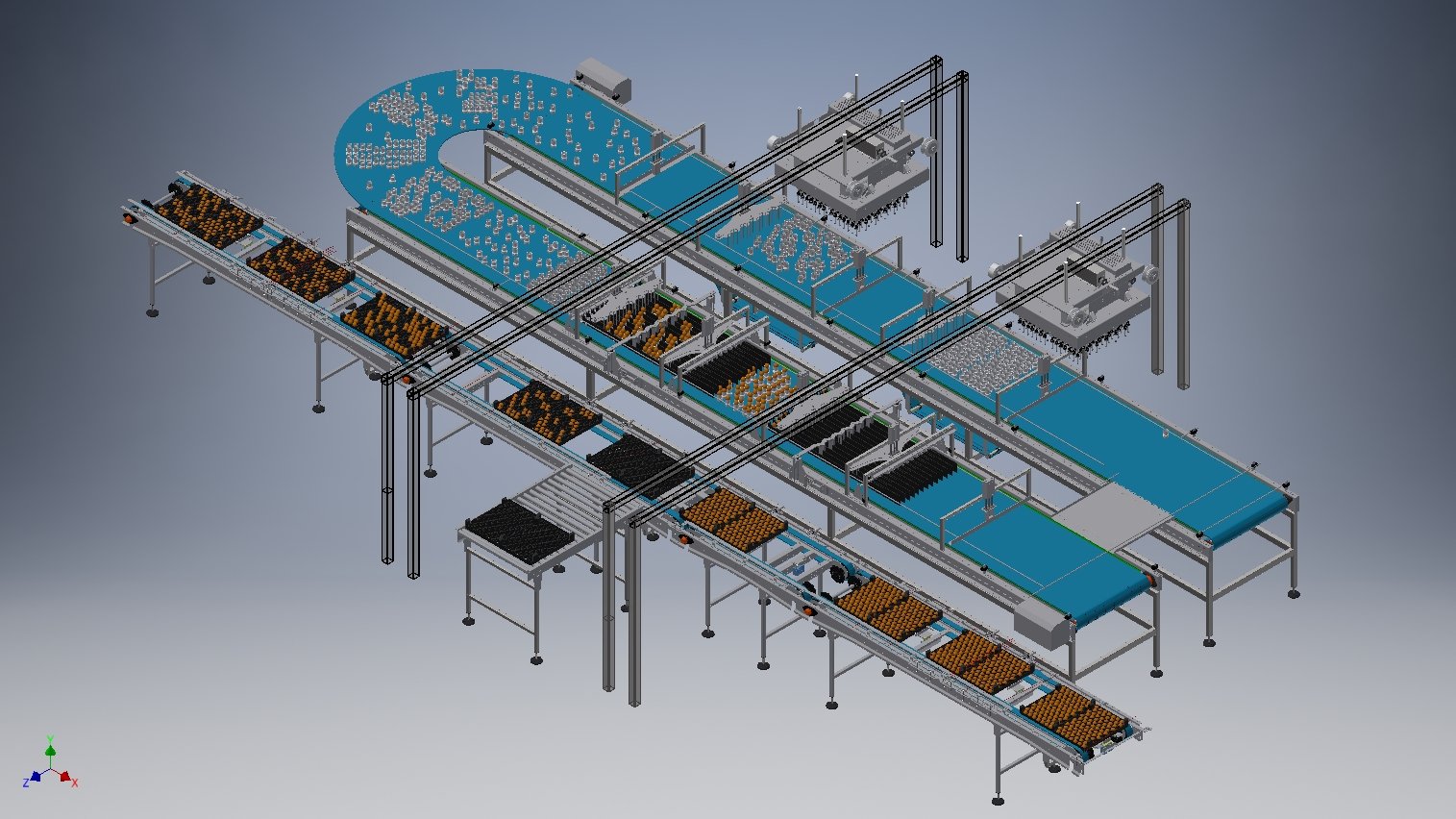Innovation Award EuroTier 2021
The winner of the Innovation Award EuroTier 2021 in gold is:
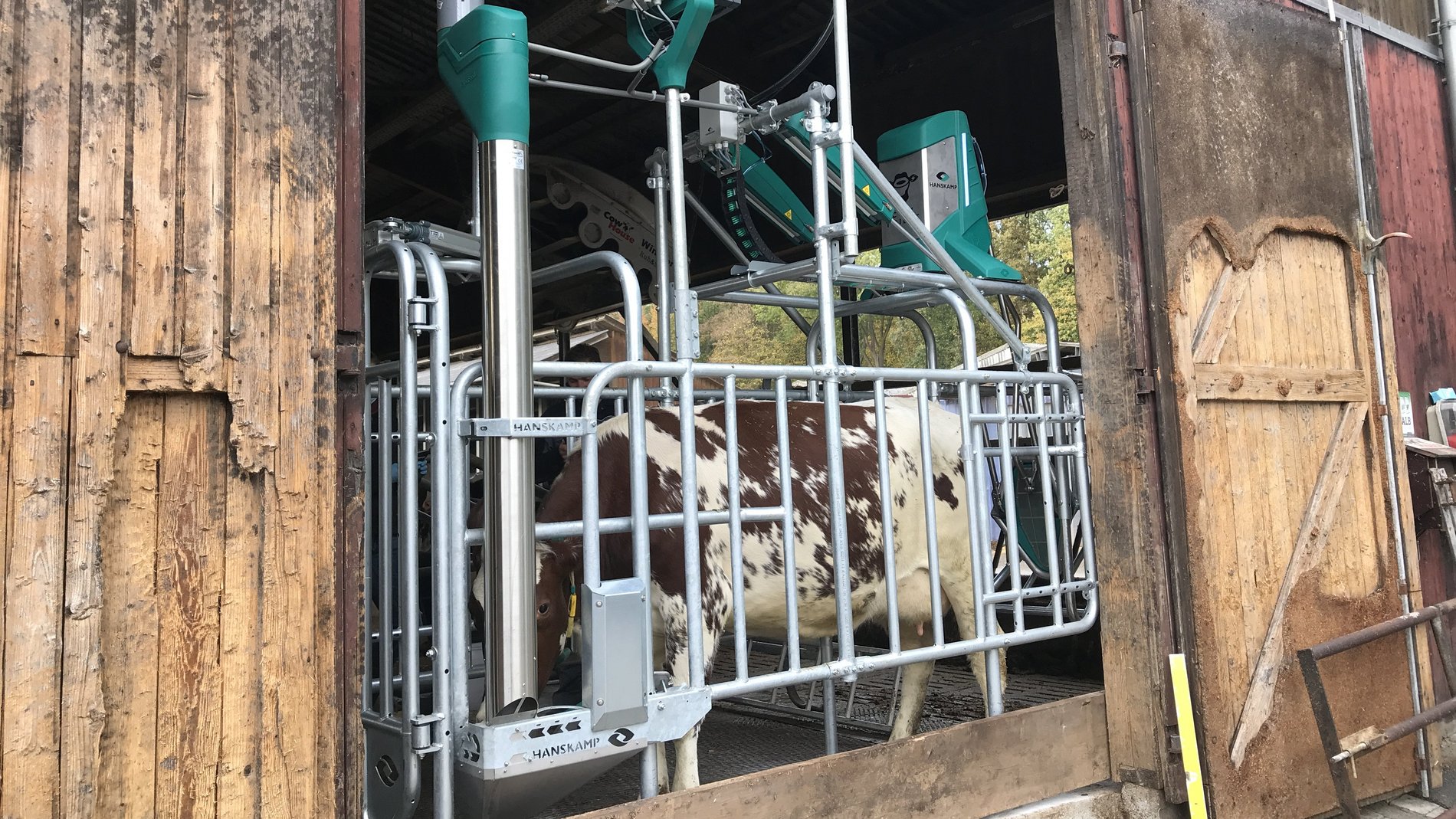
CowToilet
Hanskamp AgroTech BV
The reduction of emissions from animal production is becoming increasingly important. While measures in this regard targeted the removal of emissions that had already arisen from the exhaust air of cow sheds for quite some time, current focus is aimed more at reducing their occurrence technically or, at process level, preventatively wherever possible. Dairy farmers are also under an obligation to look for and effectively implement potentials for reducing ammonia emissions, for instance. A high volume of ammonia arises here in a comparatively short period of time, particularly from the 15 to 20 litres of urine that a cow produces each day. The CowToilet from the Netherlands-based Hanskamp company is a revolutionary product that tackles precisely this problem. The innovative system consists of a feeding station and a collection facility for the urine. At the end of feed output, an external stimulus is used to trigger the urination reflex and the urine is collected. In a hitherto unknown and intelligent manner, the Hanskamp CowToilet therefore collects the urine directly and separately from the cow without stressing the animal. The formation of ammonia on the floors is therefore reduced thanks to the early separation of faeces and urine. The floors also remain cleaner, which impacts positively both on hoof health and on the air quality in the shed. In addition, the farmer can use the separately collected and stored faeces and urine more specifically and appropriately in crop production or power generation and thereby further increase nutrient efficiency.
The winners of the Innovation Award EuroTier 2021 in silver are:
Due to reasons of product quality and cost effectiveness, egg-laying genotypes are unsuitable for producing poultry meat, which is why the male chicks of these egg-laying breeds have so far not been reared in the majority of cases. Society and politicians want the culling of day-old male chicks to be stopped and banned as quickly as possible. In ovo sexing is regarded as an alternative, with hormone analysis on the 8th/9th day of incubation currently being the most extensively developed and commercially useable method.
The SELEGGT Acus sampling system developed by respeggt GmbH for this purpose is already being used in practice. However, this system is only partially automated and samples the test fluid from the allantois using a needle. This runs the risk of injuring the allantoic membrane, which can lead to a reduction in the hatching rate. The hourly capacity of a single sampling unit is around 600 eggs.
The SELEGGT Circulus system is a significant leap forwards compared to the predecessor system. It operates fully automatically, and the allantoic fluid is now sampled contactlessly. Cleaning the sampling needles is therefore forgone and the sampling time has been reduced to 1 second per egg. In three-shift operation with 20 hours of operation per day, one SELEGGT Circulus sampling unit therefore has a weekly capacity of 360,000 hatching eggs, corresponding to 150,000 to 180,000 laying chicks, a significant increase in performance in comparison with the predecessor system.
Contactless sampling and the vastly increased hourly capacity have established the prerequisites for universally replacing the previous culling of male chicks in hatcheries with in ovo sexing.
Hygiene is critical in all livestock populations – amongst other situations, this is also the case during feeding in calf rearing. The risk of pathogens being passed from calf to calf is particularly run during automatic feeding.
The Alma Pro Hygieneset from URBAN GmbH represents the innovative use of frequently proven UV-C irradiation for reducing microbes in the area of calf feeding. Specific UV-C irradiation at relevant hygiene points of the automatic calf feeder is intended to lead to significant improvements in comparison with previous technical concepts for reducing microbes. Besides the UV-C irradiation of the boiler water, which ensures perfect water quality for mixing the feed from a hygiene perspective, the additional, monitored irradiation of the teat represents a vast improvement. In short feeding breaks between the individual calves, the teat and the adjacent contact surfaces are irradiated, thus killing a multitude of pathogens during operation. The risk of microbial transfer by the calves is also reduced thanks to this microbial reduction and reduced microbe multiplication.
Compared to other sanitisation methods available on the market, URBAN's Alma Pro Hygieneset is a safe, particularly resource-efficient and chemical-free option for reducing microbes in the calf feeder area.
One of the most sensitive areas in dairy farming is calf rearing. Automatic calf feeders have proved invaluable and ensure animal-friendly and needs-based calf feeding. Powdered milk, and also whole milk to a lesser extent, is usually used in the automatic feeders. A combination of both is additionally possible.
Fluctuating dry substance contents in new powdered milk batches necessitate constant checking and adjustment of the automatic feeders' basic settings to achieve a consistent powdered milk concentration in the feeder milk and optimum feed qualities. In practice, this important activity is occasionally forgone due to time constraints, as the milk replacer concentration has to be adjusted manually on the automatic feeder after calibration.
The Brix-TS Sensor is an electronic refractometer sensor that has been integrated into the mixing tank of the 'Calf Expert' automatic calf feeder where it continuously measures and monitors the dry substance content of the freshly mixed calf milk. In the event of deviations, the system automatically corrects the concentration in the feeder milk. If whole milk is used, a consistent dry substance concentration can also be ensured in the feeder milk by adding powdered milk if necessary.
With the Brix-TS Sensor, Holm & Laue is therefore launching a technical solution onto the market that can guarantee continuously consistent calf feed.
As part of the EuroTier Innovation Awards, products that foster the exercise of species-specific behaviour patterns and positively support animal health are additionally presented with the Animal Welfare Award by DLG together with the German Association of Practising Veterinary Surgeons (bpt). Technical solutions that lead to increased animal welfare and animal health are therefore specifically highlighted.
The ANIMAL WELFARE AWARD 2021 is being presented for the Calf Monitoring System from Futuro Farming GmbH, Regensburg. By means of continuous calf monitoring and speedy feedback to the farmer, the system enables effective health monitoring for each individual calf in the population.
The system for the early detection of diseases in calves is based on a precise, energy-saving and, above all, non-invasive infrared sensor. It detects the calf's behavioural pattern. The sensor data are promptly evaluated with AI and a prognosis for potentially developing diseases is produced. The information from the evaluation is made available to the farmer directly via an app and an online platform.
Thanks to earlier treatment, the continuous monitoring of the calf and the quick provision of information to the farmer can help to make the courses of diseases milder and reduce calf mortality. By quickly treating a calf, particularly during the first few days of its life, the monitoring system can contribute directly to protecting the calf and its health and is therefore able to significantly improve animal welfare.
Spreading liquid manure and fermentation residues close to the ground and therefore with low emissions is very important due to reasons of environmental and resource protection. Because of the size and weight of the booms, modern spreader technology all too frequently reaches its physical limits, particularly on hilly or even mountainous terrain in designated grassland regions.
The Möscha Spreader boom with plastic pipe as a supporting construction element is characterised by its simple and, at the same time, extremely lightweight design. Möscha achieves lighter boom weights by using covered plastic pipes instead of a full metal design. This further development with other materials significantly reduces the weight of the folding boom.
Besides saving material and fuel, this also extends the system's possible applications, because the precise spreading of liquid manure close to the ground with a drag hose or drag shoe attached to corresponding boom technology can also be used on lighter trailers requiring less tractive power and on more extensively contoured terrain.
The formation of ammonia on the floors can be reduced through the early separation of faeces and urine. In dairy farming, animal urine is one of the main causes of ammonia emissions, particularly when it remains on the floors and in contact with the air and faeces for long periods of time.
In the form of the Delta X Pack, French company Bioret has extensively evolved a very interesting product which enables faeces and urine on the floors of dairy cattle sheds to be collected automatically, quickly and easily and transferred to separate storage areas. To accomplish this a contra-rotating conveyor belt system has been integrated into a rubber mat system with a 3% gradient. The belt system diverts the urine collected in the central gutter to the liquid store and the animals' faeces to the solid material store.
The fast and effective separation of faeces and urine is extremely important for keeping the floors clean, for fostering animal health and for improving the shed climate as well as the environmental impact of shed systems.
The hatching eggs from broiler parent livestock farms are delivered to central hatcheries, where they are sorted according to quality and weight before being placed into the incubator. In addition, eggs that are not positioned with the blunt end pointing upwards in the tray have to be turned. This leads to a high number of incompletely filled trays that have to be manually refilled. Often, the eggs are also transported on conveyors where they can bang against one another, possibly resulting in damaged shells. In the system presented by NECTRA SAS, the eggs are transferred from the delivery trays to egg moving cups that move freely on a transport conveyor. Here, the eggs can be automatically and individually sorted according to quality and weight and can also be turned if they are positioned incorrectly. The freely moving egg cups are backed up for transfer to the hatching trays, unoccupied egg cups are automatically removed and the remaining, filled egg cups are then transferred automatically to the hatching trays so that no gaps occur. The system significantly reduces the likelihood of damaging the egg shells and automates the hatching tray filling process. This considerably lightens the workload and leads to an improvement in hatching rates in the broiler chick hatcheries.
- Farm inputs and equipment for their use
- Feed storage and mixing equipment
- Equipment, accessories and spare parts
- Cattle management and feeding technology
- Pig management and feeding technology
- Poultry management and feeding technology
- Housing and feeding technology for other animal species
- Climate control and environmental technology
- Digital solutions for herd management and quality assurance / Smart Farming
- Milking and cooling technology
- Animal housing and shed construction
- Dung, solid manure and slurry technology
- Transportation, farm and grazing technology
- Poultry and egg processing and marketing
All companies qualifying as exhibitors at EuroTier 2021 and whose products fall within the categories listed below are eligible to participate in this competition. Joint submissions may also be made. Participation is voluntary and involves no extra costs. The participating company bears sole responsibility for adhering to all relevant statutory provisions and to these DLG award and judging regulations.
To win a gold medal for innovation, a product must represent a new concept in which the function has changed significantly and which facilitates a new process or substantially improves an already familiar method. Decisive in its selection will be its practical significance, its contribution to animal welfare, the impact on operating affordability and efficiency, on the environment and on energy consumption. Its impact on labour saving and health and safety at work will also be considered.
To win a silver medal for Innovation, a product must represent an advance on an existing product such that a significant improvement in functionality and process is achieved. It will be a product that does not fully meet the criteria for the award of an Innovation Gold Medal. Decisive in its selection will be its practical significance in terms of cost, its performance and quality under working conditions and its functional safety. Further factors taken into consideration include animal welfare and impact on the environment and energy consumption.
